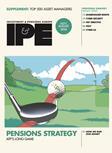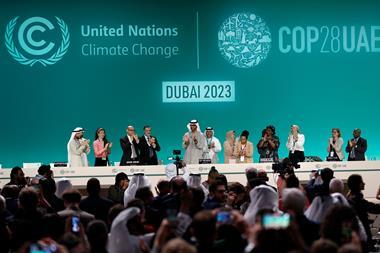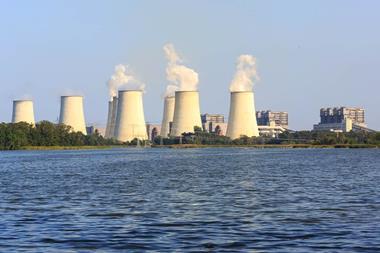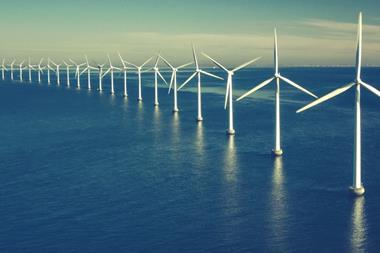The rhetoric around ‘tipping points’ is often misunderstood, says Iancu Daramus
Ever notice how illustrations of coastal cities flooded by melting poles often use the skylines of today? It’s always Big Ben and the Statue of Liberty under water, never the skyscrapers that are bound to rise over centuries, alongside the seas. This tension between adequately conveying both risks and timelines runs through discussions around ‘tipping points’ in the climate system.
We are, literally, in uncharted territory: carbon dioxide levels are now unprecedented for Homo sapiens as a species. 2023 saw temperatures temporarily breach the ‘safe limit’ of 1.5°C of global overheating, and with steadily rising temperatures comes the risk of non-linear responses.
And as the straw breaking the planetary camel’s back, we could face irreversible, dramatic changes from ‘tipping points’ – be it the collapse of ice sheets or the Amazon rainforest; the release of frozen, planet-warming, methane from the Siberian permafrost and continental shelf; or disruptions to the water cycle (in tropical monsoons, for example). Worse yet, as one recent report put it, these mechanisms can interact in self-reinforcing cascades.
The failure of ‘integrated assessment models’ (simplified interactions of the global climate and economy) to incorporate non-linearities is now becoming increasingly appreciated. So when ‘climate stress tests’ suggest pension funds’ portfolios would incur minimal losses in scenarios of otherwise devastating overheating, one can suspect shaky assumptions, rather than portfolio robustness, are a big part of the answer.
“You wouldn’t ask your doctor about the precise day he expects you to have a heart attack”
However, to say models and stress tests should better incorporate tipping dynamics (which currently they mostly do not) does not mean we can always pre-judge the results. The very word ‘tipping point’, suggesting a very recognisable before and after, doesn’t quite do justice to the manifold nature of planetary phenomena; the authors of a major review on the subject suggest ‘tipping elements’ is a more accurate phrase. Its summary of the main tipping ‘candidates’ is below.

This study raises three issues. First, persistent uncertainty. You wouldn’t ask your doctor about the precise day he expects you to have a heart attack – the point is to start making lifestyle changes now. We have a relatively short window of action – a few years if we want to be very conservative, a decade or two if we are lucky, to “bend the curve” of planet-warming emissions. Society will not collapse if we fail to reach net zero in 2050; but the more we wait, the higher the danger.
Second – nature: irreversible damage to wondrous, unique ecosystems – coral reefs, boreal forests, the Amazon – is a more imminent tipping risk than the disappearance of waterfronts.
Third – time: some of the most high-impact candidates, such as the full collapse of the Greenland and West Antarctic ice sheets, play out over “centuries and millennia”.
Unfortunately, this distinction – between the “commitment time“ when it is still possible to change course, and the “impact time” – is often blurred in popular discourse. When the late, great Stephen Hawking warned that president Donald Trump’s withdrawal of the US from the Paris Agreement risked turning the Earth into Venus, he omitted to mention that it might take a billion years for Earth to reach such a runaway greenhouse effect.
Similarly, the “two years left to save the world”, proclaimed in a recent speech by the United Nations climate chief, promptly became presented as two years left ‘to prevent billions of deaths’ by Extinction Rebellion co-founder Roger Hallam.
Whether any politician truly has such vast power over life on Earth is open for debate – what is clear, though, is that policies for adaptation and resilience risk misallocating resources if impacts are misperceived to be imminent. As discussed in a previous post, some tipping elements are only triggered in high-emissions scenarios that now seem increasingly unlikely, but that nevertheless continue to be used by governments for planning purposes.
Opponents of climate action, too, are also prone to blurring these boundaries. Internet memes depicting Al Gore or Greta Thunberg’s ‘predictions’ about how the world should have already ended now come in a plentiful supply of doubtful accuracy. This, too, misses the point – you should not abandon a newfound gym habit or pick up smoking again just because the doctor said you should have died months ago!
If, however, the doctor warned the next cigarette will kill you, you would reasonably be suspicious. And therein lies the backlash risk. Replacing ‘climate change’ with ‘climate crisis’ in editorial guidelines led many newspaper readers to feel less trustful of the media, but not more concerned about the climate.
Conjuring visions of climate apocalypse by collapsing different timelines can backfire as long as not just the torch of the Statue of Liberty, but also its feet, remain visible above the waves.
Iancu Daramus is a sustainable investment specialist, currently working on a book about the myths of the energy transition, Green Herrings. He has held senior sustainability roles at Fulcrum Asset Management and Legal & General Investment Management, and is one of the authors of go-to qualification, the CFA Institute’s Certificate in ESG Investing. This is the latest installment of a multi-part op-ed series for IPE. His previous post was about climate scenarios.


















No comments yet